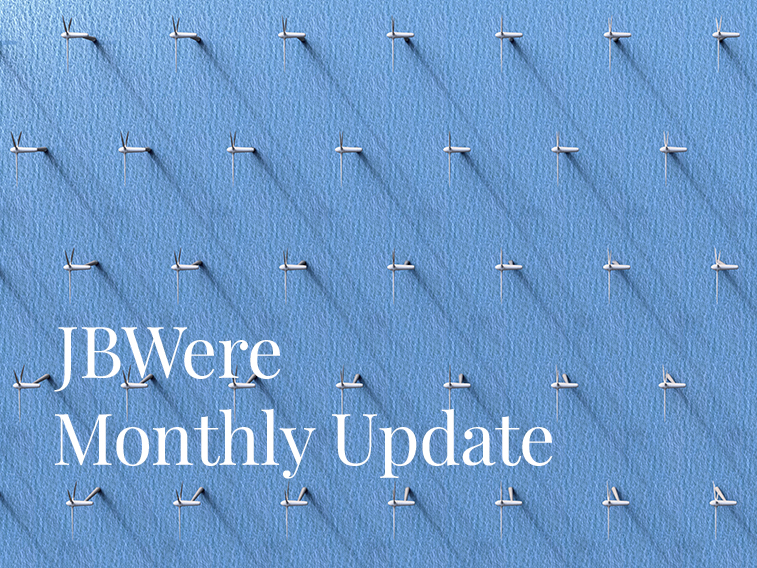The NAB Commercial Property Index lifted to an 8-year high in the March quarter, continuing the run of improvements seen in recent quarters.


Insight
Tapering is not tightening; the RBA is still adding to the stock of bonds on its balance sheet, just at a reduced rate.

The Reserve Bank of Australia (RBA) surprised some in the market by announcing at its board meeting in early September that it would commence a taper of its bond purchase (or quantitative easing) program later this month.
The RBA will now purchase $4bn of securities each week, down from a prior rate of $5bn per week. Some observers had believed that a combination of the recent shock to economic growth from lockdowns and uncertainty about the outlook would be enough to delay the RBA’s plan to taper.
It’s possible to think that tapering quantitative easing (QE) purchases is bearish for bond markets (higher yields), bullish for the $A (stronger currency) and bearish for equity market returns. But we think it is important to acknowledge that tapering is not tightening; the RBA is still adding to the stock of bonds on its balance sheet, just at a reduced rate.
Indeed, academic literature has concluded that it is the stock of bond purchases, rather than the flow, that is most impactful on the level of interest rates. The RBA has noted that the main effect of its bond purchases on the government bond yield curve comes from the expected stock of bond purchases that the Bank is likely to do over the entire program. So we don’t expect a sharp rise in government bond yields as the RBA commences a taper of bond purchases.
It’s also important to note that the commencement of the taper doesn’t imply that rate hikes are imminent. Indeed, in a recent speech the RBA Governor re-iterated his view that rate hikes remain a story for 2024, and not before. So just because the RBA has started the taper, it doesn’t mean that rate hikes are any closer. Most central bank officials think of tapering and rate hikes as very distinct policy tools. In most instances, the requirements for rate hikes – like full employment and target-consistent inflation – are far more onerous than they are for tapering.
We don’t think the taper will be overly consequential for the AUD. The RBA’s modest taper is in line with the behaviour of other central banks, which should limit out-performance of the $A vs. G10 peers. Rather, we expect that other factors, such as the outlook for Chinese growth, the iron ore price and the path of Australian interest rates relative to US interest rates will be more important influences on the AUD in coming quarters.
What about equity markets? For equity markets, there are two relevant points. First, we don’t think the taper will result in a large rise in risk-free yields. All else equal, this should provide some protection to equity market valuations as it implies little change to the long-term interest rate that is used to discount the value of a company’s future cash flows.
Second, a low yield environment should ensure that the ‘portfolio rebalancing” channel of QE still operates. The portfolio rebalancing effect works in the following manner: QE keeps government bond yields (risk-free rates) lower than would otherwise be the case. This forces investors to extend along the risk spectrum (that is, to buy riskier assets) in order to seek higher returns. As money flows into these markets, the prices of riskier assets rise, which creates a wealth effect. This, in turn, is assumed to stimulate consumer spending and investment, and eventually, inflation and economic growth.
So to the extent that QE supports risky asset markets, a taper that continues to exert downward pressure on risk free yields and keeps broader financial conditions loose should still be reasonably supportive for equity markets, all else equal. However, we do think it is important to note that this channel is likely to operate with diminishing returns going forward, especially given the stellar gains in equity markets in the past 18 months.
The final point we make is that the taper is not the beginning of the end for QE policies in Australia. In our view, central banks’ use of balance sheet policy should now be regarded as part of the conventional toolbox of monetary policy. Although cash rates will eventually rise this cycle, they will not lift by enough to provide central banks with enough ammunition to adequately support the economy when the next downturn comes.
If this is correct, then the RBA will need to use a combination of rate cuts and balance sheet expansion (QE) to cushion the domestic economy in the next downturn. Just as low interest rates are now likely to be part of the longer-term outlook for financial markets, so will be much larger central bank balance sheets and QE policies.
© National Australia Bank Limited. ABN 12 004 044 937 AFSL and Australian Credit Licence 230686.